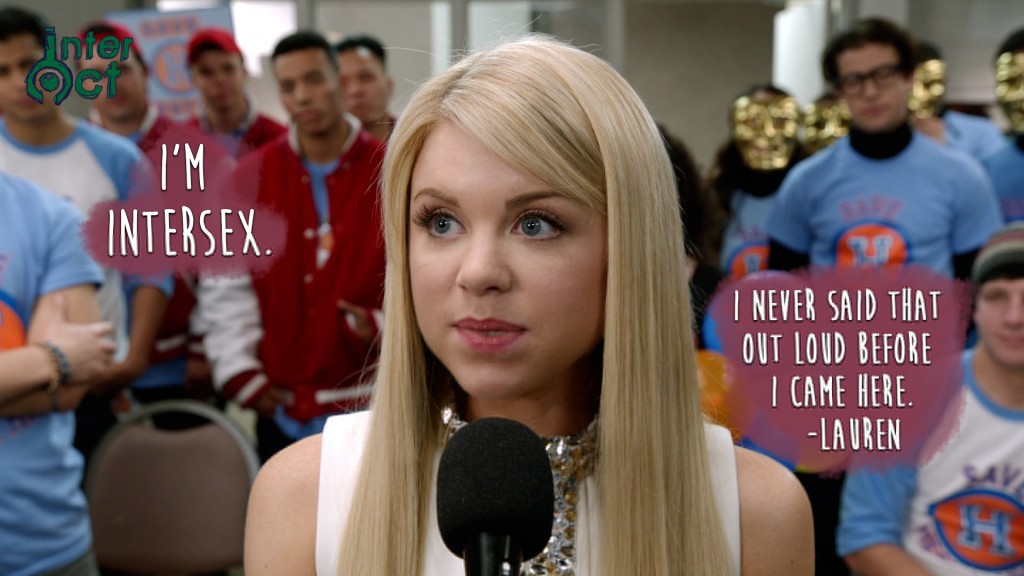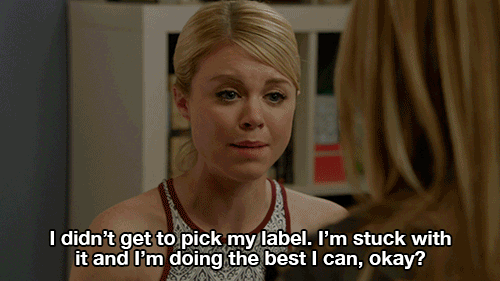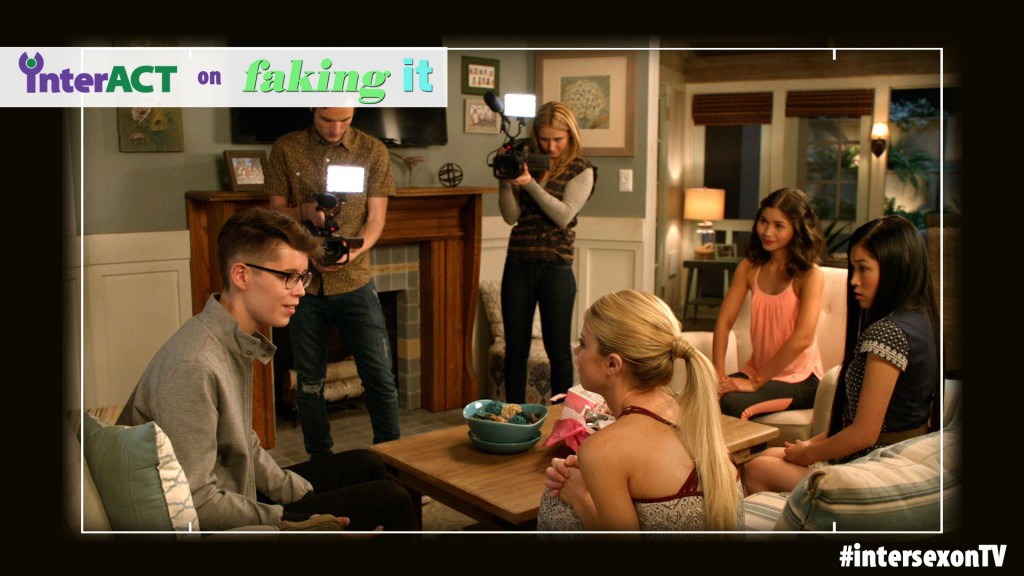Celebrating intersex firsts on TV

Lauren (Bailey De Young) on Faking It. Images courtesy of interACT.
The MTV series “Faking It” is smashing records when it comes to intersex representation in the media. Historically, fictional TV and film representations have typically presented intersex people as either murderers, medical dilemmas or a prop for malicious rumours. Accurate and positive representations are rare, so Faking It marks a very significant shift, and we’d like to thank the folks at interACT for their work with MTV to get this right.
Faking It is a comedy show set in Austin, Texas, exploring all kinds of sexuality, gender and bodily issues, it’s fresh with interesting characters. It premiered on MTV in 2014 and is now in its third season. In Australia, some seasons are currently available on Stan and iTunes.
Kimberly Zieselman at interACT was approached by program developer Carter Covington. Interviewed by Buzzfeed, she described how she was skeptical at first:
“The other times in history so far that intersex characters have been portrayed on TV, they have, first of all, never been main characters, but they’ve been small parts — maybe in one episode — and, for the most part, it has not been tastefully done or respectfully done… Talking to the writers, they’re very, very interested and very, very respectful and want to do this right. They want to tell a real story.”
In series 1 of Faking It, the character Lauren Cooper, played by Bailey De Young, was seen dealing with some of the impact of having Complete Androgen Insensitivity Syndrome, with XY chromosomes and female external sex characteristics. This included taking pills necessary to maintain her hormone levels after an unnecessary sterilisation.
Every intersex trait is different, and every intersex person is different, but we share some experiences in common. In season 2, and struggling with secrecy and shame, Lauren disclosed her intersex status for the first time.
Being a woman with an intersex trait is not the only aspect of her character, she’s complex in all the ways that real people are, and she continues to develop and grow.

Lauren (Bailey De Young) on Faking It.
Bailey De Young’s own reaction to playing an intersex woman is heartening:
“The more I learned about it, the more honored I was that I got to be part of telling that story… And then also [I felt] a responsibility to make sure I was doing right by people who have dealt with that.”
In season 3, Faking It hit another milestone: not only an accurate portrayal of an intersex story, but an intersex character played by an intersex person. When people talk about trans or non-white characters we often hear ripostes to debates about self-representation stating the need for actors to act. Of course actors have to be able to act but, but for this single show to have multiple intersex characters, including the first realistic intersex character and now an intersex actor is a huge and very welcome achievement.
Talking to Logo TV’s NewNowNext, Amanda Saenz told New Now Next,
“Walking onto a studio set was perhaps one of the more surreal things that I’ve done in my life… Being portrayed in an honest fashion is something that we have been fighting for for a long time”

Amanda Saenz as Raven, and Bailey De Young as Lauren, on Faking It season 3.
Writing on the interACT blog, interACT youth member Ryan says:
It’s such a positive thing for younger teenagers finding out that they are intersex and be able to see people on TV experiencing similar issues. I would have loved seeing an intersex character on TV when I was struggling with my diagnosis, and now people coming into their identity as an intersex person can have that!
We agree! Thanks to Carter, MTV and the folks at interACT! We look forward to seeing this season of Faking It on Australian TV, and we look forward to a time when Australian programming catches up with the diversity that exists in the Australian population. We’re happy to help.
More information
Personal responses from people involved in interACT:
- interACT youth member Ryan: “My name is Ryan, and just like Lauren Cooper, I am also intersex.”
- Pidgeon Pagonis: “The Significance of MTV’s Intersex Representation”
Media coverage:
You must be logged in to post a comment.